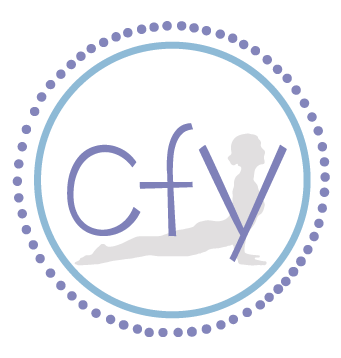Anatomy of the Knee
I hope you are enjoying these articles about anatomy and how it relates to your yoga practice! I am really enjoying writing them!
Read more below to learn about the anatomy of your knees, potential injuries, and how to protect them during your practice!
The Knee Joint
The knee is a joint where three bones meet: shin bone (tibia), thigh bone (femur), and kneecap (patella). Two pads of cartilage sit between the femur and tibia and act as shock absorbers. Four major ligaments connect the bones (ACL, PCL, MCL, LCL). Muscles of the leg help the ligaments keep the bones aligned. Four muscles make up the quadriceps and merge into the quadriceps tendon. This tendon attaches to the knee cap, continuing below the knee cap as the patellar ligament, which attaches to the tibia. If muscles on both sides of the knee are imbalanced, injury can occur.
The knee is a hinge joint, which means it primarily bends (flexes) and straightens (extends), but the knee does have some lateral movement.
If you are physically active, chances are you have experienced knee pain at some point in your life. Some common knee injuries or issues are:
- Osteoarthritis - cartilage of the knee decays and fails to provide shock absorption.
- Misalignment of the knee cap - the knee cap does not track properly in the groove on top of the femur.
- Hyperextension - ligaments can be caused to stretch too far. Think of Dandasana (staff pose), where you are seated with your legs straight out in front of you. If your legs straighten so much that your heels lift away from the mat, you are in hyperextension, which over lengthens the ligaments of the knee. Strengthening muscles around the joint is important for people prone to hyperextension.
How can you prevent knee injury? Strengthening the muscles around the joint is important for stabilization. Also, equally building muscles of the quadriceps on the inner and outer leg can help to keep the joint properly aligned. Try this exercise to strengthen your vastus medialis of the inner thigh, which tends to be weak:
- Sit with your legs straight out in front of you with a small towel rolled up under your knees
- Spin the toes of your right foot slightly to the right (as if your toes were point to the 1 on a clock). Slowly straighten that leg so the foot lifts off the floor and hold for 8 seconds. Repeat this a couple times, while placing your hand just above your inner knee to feel the vastus medialis of your inner thigh engage and disengage. Repeat on your left leg.
- Do same thing with your toes facing up towards the ceiling and see if you can engage the vastus medialis.
- Spin the toes of your right foot slightly to the right (as if your toes were point to the 1 on a clock). Slowly straighten that leg so the foot lifts off the floor and hold for 8 seconds. Repeat this a couple times, while placing your hand just above your inner knee to feel the vastus medialis of your inner thigh engage and disengage. Repeat on your left leg.
In your yoga poses, bringing awareness to your knee is important. And practicing certain poses can help strengthen your knee, if done properly. Try the following to strengthen your knees:
- Bridge with block between feet
- Chair pose against wall, press evenly through feet (notice the weight distribution of your feet; I often see weight lean towards the inner arch with the knee caving in)
- Standing balance on one foot with eyes closed (feel your feet, ankles, and knees work to stabilize you)
- Standing balance poses with standing leg bent, such as eagle
- Standing balances poses with standing leg straight, such as tree or half moon
- Dynamic movement in standing poses, such as bending and straightening your front leg in crescent pose or Warrior II and tracking your knee over your toes
Finally, keep the following tips in mind as you practice:
- If you are recovering from a knee injury, consider steering clear of athletic yoga classes until you can build strength.
- If you feel pain, back off poses.
- Focus on your feet. What is happening in your feet affects what happens all the way up the leg.
- In general, keep your knees in line (knee over ankle and tracking towards toes) in standing lunging poses, such as Warrior II. Lift the inner arch of your front foot and watch the direction the knee moves.
- In general, if you leg is bent in a standing pose (such as your front leg in crescent), put weight into your front heel. If your leg is straight (such as your front leg in triangle), press into the big toe mount of the foot.
- Use props in poses where your knee is in deep flexion, such as Virasana or Child’s pose.
Hopefully this helps you to think about your habits and tendencies in your practice and gives you some tips for maintaining proper alignment. The health of your knees impacts your daily life, so keeping them healthy and strong is important!
